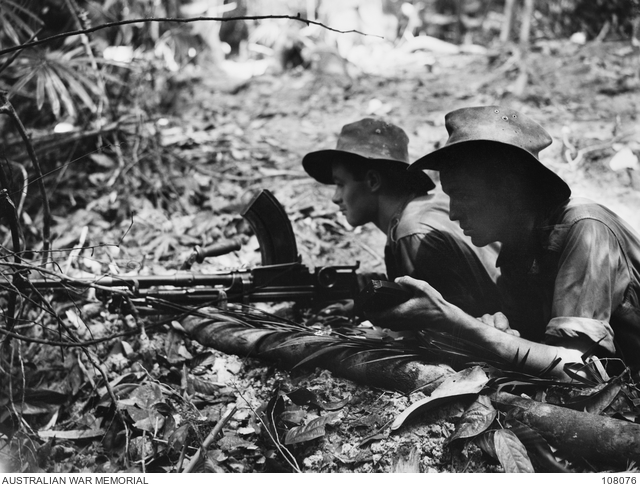On this day in 1945, a largely Australian force carried out an amphibious invasion of the small Japanese-held island of Tarakan, just off Borneo. The landing went smoothly but bitter fighting ensued over the next few weeks as the Japanese retreated to an inland stronghold where they’d prepared formidable defences. While the Allies were able to seize control of the stronghold and defeat the Japanese, mopping-up operations continued until the end of the war.
The Battle of Tarakan is not well known today, but it was the first phase of the broader liberation of Borneo. Tarakan was thought strategically important because it contained oilfields as well as an airstrip that would enable the RAAF to support troops in their other Borneo operations.
The main Australian unit responsible for taking Tarakan was the 9th Division’s 26th Infantry Brigade, with support from Netherlands East Indies troops. RAN and US Navy warships and landing craft delivered the force to the shore. Members of other Australian units were there too.
One of these was 21-year-old James Cronk who was serving as an aircraft technician with the RAAF. He described wading ashore on 1 May as ‘no picnic’.
'They had tank traps, and sea mines on the beach, and a jetty that was loaded with explosives.
‘Up on top of another hill there they had an oil tank full of oil, and they were going to pump that into the sea and set it alight … We were out there in the boats, but we didn’t learn about that until after the war.’
The battle attracted controversy at the time. The oil facilities and airstrip had been so badly damaged by Allied bombing the previous year, that they could not be repaired before the end of the war, making the strategic value of the island questionable.
Sadly, 225 Australians were killed in the Battle of Tarakan, as were more than 1,500 Japanese.
The Australians killed on Tarakan included two Victoria Cross recipients. On 12 May 1945, Corporal John Mackey, 2/3rd Pioneer Battalion, was killed leading an attack against a strongly held Japanese position and was posthumously awarded the VC. On 24 May, Lieutenant Thomas ‘Diver’ Derrick VC DCM, 2/48th Battalion, who was awarded his VC in New Guinea in 1943, died of wounds received when also attacking a Japanese position.

Members of 2/223rd Infantry Battalion in their Bren gun pit during the attack on the Japanese-held ‘Freda’ feature, 23 May 1945. Image courtesy of the Australian War Memorial (AWM 108076).